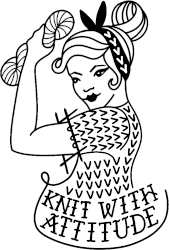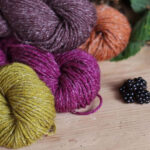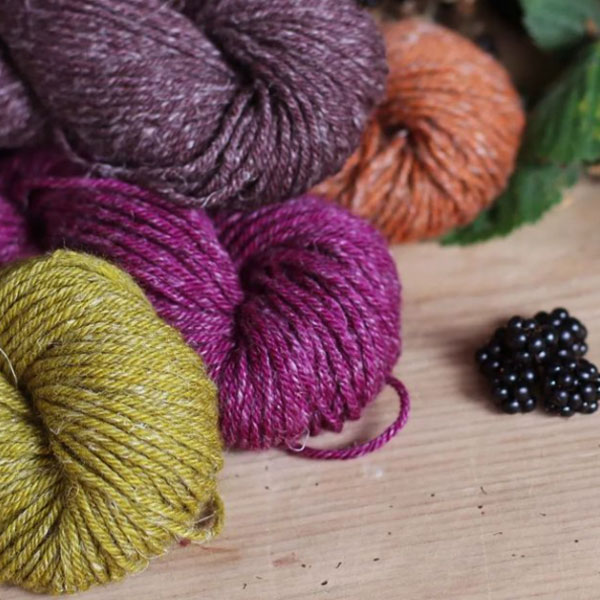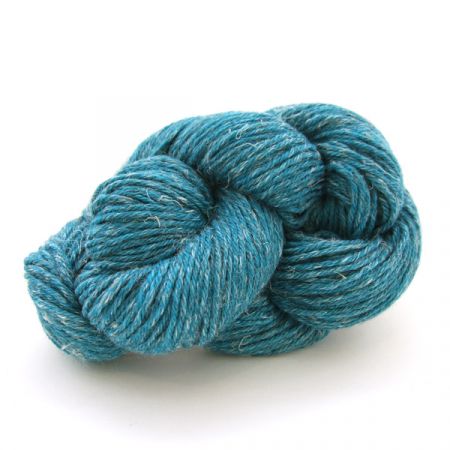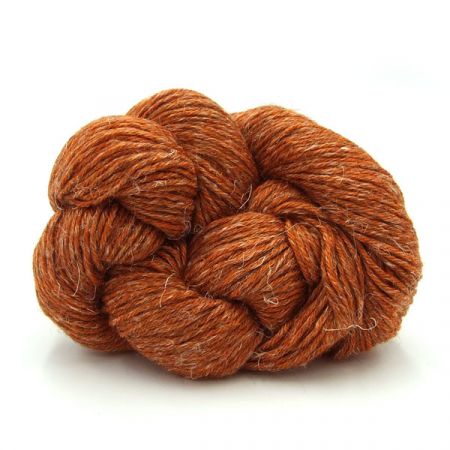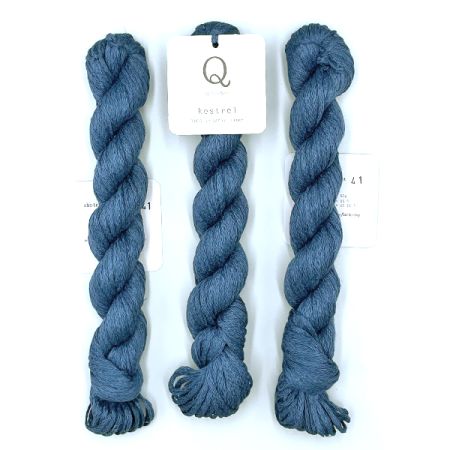Fibre Talk - Linen
This post was originally written by Natalie Selles and published on our blog back in 2015. The Fibre Friday posts have now been edited to reflect our current selection of yarns, under the new heading Fibre Talk.
This week's fibre feature is linen. Linen has been used as fabric for thousands of years. Some of the oldest fabrics found were made of linen, dating back to 2,000 BC in Egypt.
Linen is a fantastic hot weather fibre. It is cool to the touch and breathes very well, keeping the wearer protected from the hot sun without over heating. Linen is unique in being one of the few fibres that is stronger when it is wet, making it a very durable fabric.
Linen comes from a plant called flax. Unlike cotton, where the fibre comes from a pod that the plant produces, linen is made from the inner stalk. This type of fibre is called a bast fibre. Other bast fibres include nettle, hemp and rattan. The plant is grown to a height of about 4 feet. When it is ready, the plants are pulled up from the roots and left to decompose in a process called retting. This unbinds the unwanted outer bark from the inner bark that makes the fibre. The two types of bark are separated by big metal rollers in a process called scutching. The fibre lengths are combed to find the longest fibres which are then spun into thread or yarn. It is easy to see how linen production is labour intensive. The highest quality linen is produced in Western Europe and the Ukraine, with the best coming from Ireland, Italy and Belgium. Part of this is due to the ideal climates in these regions for growing the plants. We found two amazing documentaries that show the process of producing linen in Europe. They are in French, but with English subtitles. The first is about linen production and farming, while the second highlights the innovations that are being made in linen and flax being used in less traditional production. https://player.vimeo.com/video/16474921
BE LINEN MOVIE from Benoit MILLOT on Vimeo.
BE LINEN MOVIE 2 from Benoit MILLOT on Vimeo.
We have lots of linen and linen blends in the shop at the moment, perfect for those crisp and cool summer knits. Let's take a closer look:
Växbo Lingarn
Växbo Lingarn has been our staple linen for many years. It is a firm 4ply with a whopping 420 meters per 100g hank. Växbo Lingarn is a 100% natural pure linen yarn and it is certified with the Swedish Good Environmental Choice label (Bra Miljöval) because of its durability and environmentally friendly processing. The earliest trace of flax culture in the Swedish county Hälsingland is dated to circa 200 AD. Evidence from the Viking age indicates that women wore linen chemises under their woolen skirts. Flax has been grown for domestic use throughout Sweden. In medieval times there was a surplus of flax in Hälsingland and linen became an item of trade. In fact, linen rather than money was used to pay taxes and fines. The farming of linen has unfortunately seized in Sweden, and so Växbo Lin buys their raw fibres from France and Belgium, however situated in an area with such a rich history from the traditions of the linen's heydays - they maintain the pride and quality derived from centuries of knowledge and expertise.
Quince & Co Sparrow
Another smooth and firm 4ply weight linen yarn, Sparrow is made using organic linen from Belgium, and it comes in practical 50g hanks with 155 meters per hank. Linen is a fibre that ages more slowly than other textiles, and It becomes softer and more beautiful over time. It is known as one of the strongest and most hardwearing of plant fibres. Linen has a smooth surface that repels dirt and stays clean longer than other textiles. The fact that it dries quickly reduces the risk of bacterial growth, which keeps it fresh for longer. So don’t wash unless necessary.
Quince & Co Kestrel
Also from Quince & Co we have Kestrel.
Quince & Co's new take on linen to provide a thicker yarn! Searching for heavier weights in plant fibres can turn out to be a very difficult task, this due to the nature of the long smooth fibres of plant material. Of course one can achieve thinckness by twisting multiple strands together, but this solution gives yarns that barely hold together and will split as soon as you touch it.
With Kestrel, Quince & Co took the same Belgium-grown organic linen that they use in the lighter Sparrow and spun it in a ribbon structure resulting in a heavy Worsted / Aran weight that will knit up in no time! Kestrel's flat surface adds a slight beautiful texture to simple knit and purl stitches, but the best thing about it is its incredible drape. Like all things linen, woven or knitted, Kestrel only gets better as you wash and wear it.
Mixing linen with other fibres you achieve strength and texture, but also the fibre is temperature regulating meaning it can give cooling properties to warm and heavier fibre types like wool, thus making them more suitable for summery garments. We have quite a range of fibre blends containing linen, lets take a look at those now:
The Fibre Co. Meadow
The Fibre Co. is known for their unusual blends of fibres to create unique yarns. Meadow is 40% Merino Wool, 25% Baby Llama, 20% Silk and 15% Linen. This heavy laceweight has amazing drape with a subtle texture. The merino and baby llama provide softness and bounce, the silk sheen and drape, and the linen a crisp hand and lovely stitch definition. Slightly heavier than a typical lace weight yarn, Meadow works well on a wide variety of needle sizes. This is the perfect choice for showing off those delicate pieces like lace shawls and drapy tops. With 498 meters per hank, you can do a lot of knitting with just one or two balls.
&Make DK
&Make is a new brand created by the wonderfully talented people at The Fibre Co, with the intention of making yarns that are low cost without compromising on quality.
With the &Make, The Fibre Co. set out to create a yarn range for stitchers at every stage of their crafting journey, made from 100% natural, sustainable fibres from renewable sources. &Make has a stunning full palette of cheerful brights and nuanced shades created by overdyeing a range of naturally light and dark coloured fibres. Each of the &Make range yarns include Fairtrade hard-wearing Peruvian Highland wool in the blend. This wool was recommended by Fibre Co.'s partner mill in Peru with whom they have worked for nearly 20 years. &Make support the work of the fair trade suppliers of this wool and has the Peru Fair Trade logo on their labels.
For their DK &Make yarn, the Fibre Co. added linen to soft alpaca and strong Highland wool, and it really adds a crispness to the stitch definition, making it a perfect yarn for textured stitch patterns - popping purls, crisp crochet, sharp stitches in every craft - this is a versatile 2 ply yarn with 125 meters on a 50g ball, great for sweaters and accessories.
Stolen Stitches Nua
Nua is a blend of merino, yak, and linen. Each of these fibres contributes something special to create an amazing yarn blend. Merino provides a soft, squishy, and versatile base. Yak adds a unique silkiness to the yarn that knitter fingers will simply love. Finally, linen, a fibre with a deep history in Irish culture, adds stength and durability. Nua is non-superwash, which creates a lighter yarn with a bit more bounce, making blocking easier and helping projects (especially garments) to hold their shape nicely. The blend of fibres also work together to create rich and interesting colorways. The linen absorbs dye differently which allows the yarn to have a natural tweed effect, and the yak is the key to the subtle colour palette. It adds a natural light brown to the base yarn so all the colours are just that little bit darker in the finished yarn. Here at Knit With Attitude we have Nua in both the Sport weight with 140 meters on a 50g hank and the Worsted weight with 100 meters on a 50g hank.
